Within the annals of history, few comparisons have sparked as much intrigue as the military strengths of India and Pakistan. Since their twin independence from British rule in 1947, celebrated a day apart, these two South Asian powerhouses have crafted their own distinct legacies.
As we stand in the year 2024, a year witness to their prowess, the juxtaposition of India vs Pakistan military reveals a riveting panorama of strategic might. It is a landscape rich with tales of valour, punctuated by the thunder of armaments, and carved by the enormous investments of treasuries.

Indeed, the Global Firepower Index showcases India at a formidable fourth rank with Pakistan not far behind at ninth—a statement of their relentless pursuit of defense excellence.
The gravity of these rankings is further elucidated by a stark contrast in their military budgets, reflecting not just monetary outlay but the aspirations of a nation—India’s towering defense budget of approximately $74 billion eclipses Pakistan’s determined spend of about $6.35 billion.
Embarking on an analytical journey through the heart of two of the world’s most discussed military establishments, our mission is to dissect facets such as army strength and capabilities, air superiority, naval dominance, and the much-talked-about nuclear prowess that populate the discourse of Indian vs Pakistani military power.
We shall shed light on who is stronger, India or Pakistan, in terms of missile technology, cyber warfare capabilities, and military expenditure. International military cooperation will also be a keynote subject, unveiling the tapestry of alliances that bolster the subcontinental giants.
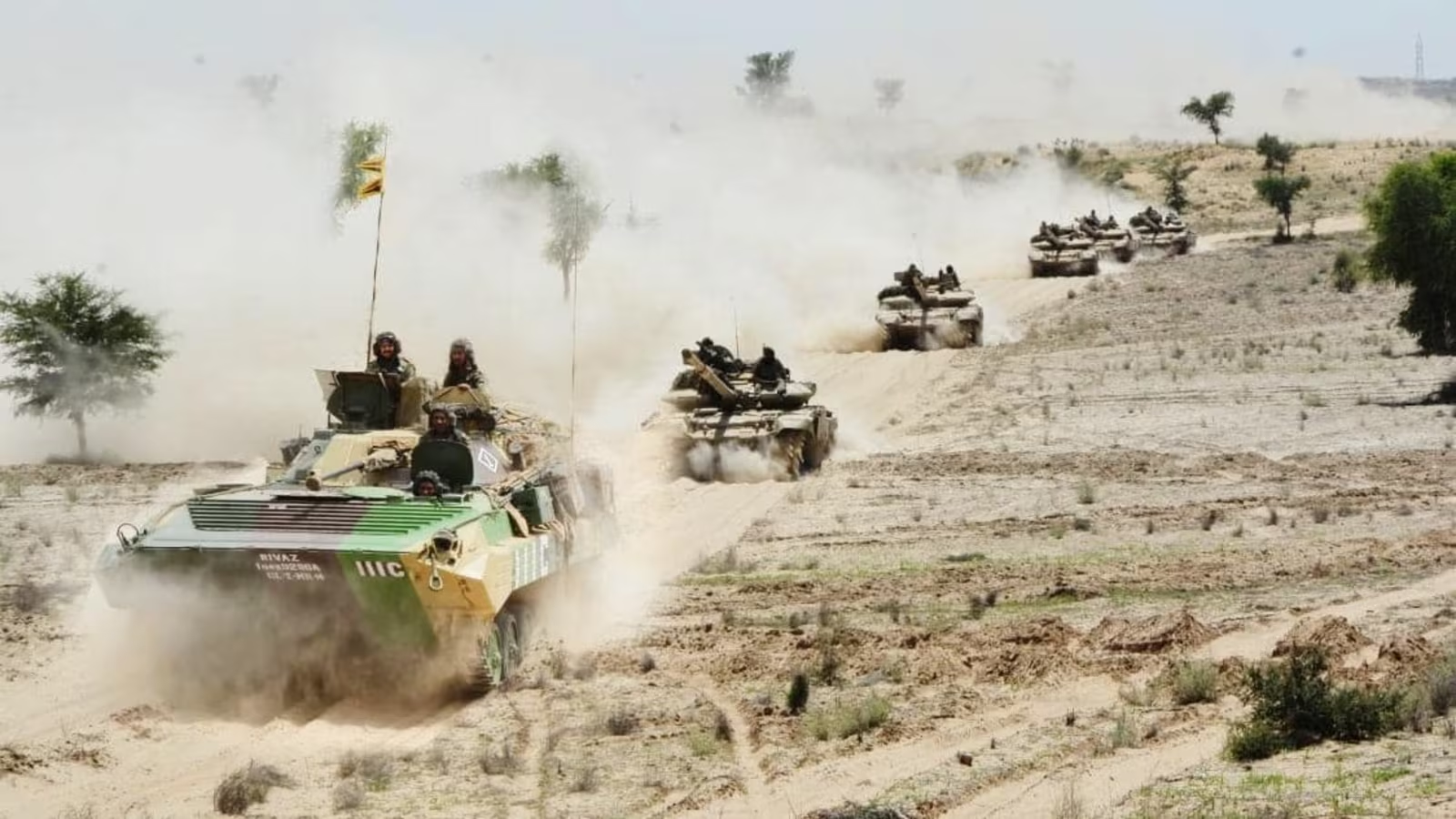
This article aspires to educate and empower readers — may it be the budding defense aspirant or the strategic analyst — with a comprehensive comparison that navigates through the intricate corridors of power, strategy, and ambition that define the military ethos of India and Pakistan. As we compare the Indian army with the Pakistan army, let our investigation be guided by facts, our understanding broadened by insight, and our knowledge fortified by an authoritative, in-depth exploration of India vs Pakistan military power.
Army Strength and Capabilities
In our quest to dissect the military might of India vs Pakistan, we delve into the heart of their forces on land: the army strength and capabilities. The Indian Army, backed by a mammoth budget allocation, stands as a colossal entity in comparison to its counterpart. Here’s how the two stack up:
Budget and Personnel:
- India:
- Military Budget: 6,21,540.85 crore
- Active Personnel: 1,237,117
- Reserve Personnel: 1,155,000
- Pakistan:
- Military Budget: 149,200.47 crores
- Active Personnel: 654,000
- Reserve Personnel: 550,000
Military Assets:
- India:
- Tanks: 4,614
- Vehicles: 151,248
- Self-Propelled Guns (SPGs): 140
- Towed Artillery: 3,243
- Multiple Launch Rocket Systems (MLRS): 702
- Pakistan:
- Tanks: 3,742
- Vehicles: 50,523
- Self-Propelled Guns (SPGs): 752
- Towed Artillery: 3,238
- Multiple Launch Rocket Systems (MLRS): 602
Strategic Depth and Capabilities:
- India:
- Special Forces Units: Renowned for their prowess, including the Para SF, Ghatak Force, and MARCOS.
- Military Engineering: Robust infrastructure capabilities with the Border Roads Organisation (BRO) and Corps of Engineers.
- Cyber Warfare: A dedicated cyber cell under the Army Cyber Group to safeguard against and engage in cyber threats.
- Pakistan:
- Special Forces Units: The Special Services Group (SSG) is the primary special operations force of the Pakistan Army including Special Services Group Navy (SSGN), Special Service Wing (SSW).
- Military Engineering: Corps of Engineers (Pakistan Army), these are spread across various divisions and brigades of the Pakistan Army, providing engineering support directly on the field.
- Cyber Warfare: One of the key institutions involved in cyber security and warfare capabilities in Pakistan is the National University of Sciences and Technology (NUST).
The Indian military’s budgetary muscle translates into a wider array of hardware and a larger pool of human resources, which are pivotal in projecting power and ensuring national security. The figures and facts speak volumes about the ‘who is more powerful India or Pakistan’ debate, with the scale tipping towards India in terms of sheer numbers and financial commitment.
However, military might is not solely about numbers. It’s the strategic application of these resources that ultimately carves the outcome of any confrontation. As we compare Indian army with Pakistan army, it is crucial to understand that both nations have tailored their armies to their unique strategic needs and geopolitical realities. The Pakistan military power, while smaller, is nonetheless formidable, honed by years of regional engagements and tactical expertise.
In the next segments, we will explore how these land-based capabilities integrate with air, sea, and nuclear forces to form a comprehensive military posture. As we continue our analysis in the India vs Pakistan military power comparison, we remain committed to providing an authoritative and fact-based narrative to answer the pressing question: India or Pakistan, who is stronger?

Air Force Power
As we extend our analysis to the skies, the comparison between India vs Pakistan military power takes a soaring leap into the domain of air superiority. The Indian Air Force (IAF), with its impressive ranking as the 6th global air power, is a formidable force to reckon with. Here, we unpack the aerial might of India and how it contrasts with Pakistan’s air capabilities.
Fleet Strength and Advanced Aircraft:
- India:
- The IAF’s fleet is a mix of high-tech fighters, transport aircraft, and surveillance planes.
- Key fighters include the Sukhoi Su-30MKI, the versatile Rafale, and the indigenously developed Tejas.
- Aerial refueling capabilities are bolstered by aircraft like the Ilyushin Il-78, enhancing operational range.
- Pakistan:
- The Pakistan Air Force (PAF) operates a varied fleet, with the F-16 Fighting Falcon and JF-17 Thunder at the forefront.
- While they have fewer advanced 4th and 5th generation aircraft, they maintain a focused operational strategy.
Training and Readiness:
- India:
- The IAF emphasizes rigorous training, with institutions like the National Defence Academy and the Air Force Academy.
- Joint exercises with global powers, such as Red Flag and Cope India, keep the IAF combat-ready.
- Pakistan:
- PAF pilots are known for their tactical acumen, developed through training programs like the Combat Commanders’ School.
- They frequently engage in exercises with allies, ensuring a high state of readiness.
Technological Edge and Upgrades:
- India:
- The IAF is investing in next-generation technologies, including the development of the Advanced Medium Combat Aircraft (AMCA).
- Upgrades to existing fleets, such as the MiG-29UPG and Mirage 2000I, ensure contemporary relevance.
- Pakistan:
- The PAF, while smaller, is focusing on upgrading its assets and improving its defense electronics and radar systems.
- Collaboration with China in developing the JF-17 Block III provides a significant boost to their technological capabilities.
In the intricate ballet of air power, the IAF’s advantage in numbers, technology, and diversified fleet provides a substantial edge in the india vs pakistan military power discourse. The strategic positioning of airbases, coupled with the ability to conduct long-range operations, solidifies India’s stance in the ‘who is more powerful india or pakistan’ debate. However, the PAF’s agility and tactical innovations make it a resilient force, not to be underestimated in the compare indian army with pakistan army analysis.
The prowess of an air force is not merely in its machines but also in the valor of its airmen and the strategic depth of its command. As we move forward, we will explore how the naval forces of India and Pakistan further define their military strengths and how they stack up against one another in the grand scheme of regional security.

Naval Superiority
As we navigate the deep blue strategic tapestry of India vs Pakistan military power, we steer towards the domain of naval superiority. The Indian Navy, with its blue-water capabilities, casts a long shadow over Pakistan’s green-water naval force. The contrast in maritime might is stark, as we outline below:
Fleet Size and Global Reach:
- India:
- Total fleet size of 294 ships and submarines.
- Operates two aircraft carriers, INS Vikramaditya and INS Vikrant, which serve as floating airbases, capable of projecting air power globally.
- Boasts 1 nuclear-powered submarine, INS Arihant, which enhances its second-strike nuclear capabilities.
- Pakistan:
- A significantly smaller fleet size of 114 vessels.
- Lacks the presence of any aircraft carriers, limiting its ability to project air power beyond its immediate region.
- Operates 5 diesel attack submarines, focusing on regional security and coastal defense.
The Indian Navy’s ability to operate globally, with its carriers, signifies a strategic advantage, allowing it to bring its fighter jets and other lethal weapon systems to any part of the world. In contrast, Pakistan’s Navy, tailored for its regional defense, underscores its operational limitations.
Surface Warfare and Coastal Defense:
- India:
- Commands a formidable lineup of 11 guided missile destroyers, designed to engage multiple threats at sea.
- A fleet of 12 stealth guided frigates and 18 active corvettes provides a balanced force, capable of offensive and defensive operations.
- Pakistan:
- Pakistan’s naval force does not include destroyers, which are critical for blue-water engagements.
- Maintains a fleet of 9 frigates and 6 corvettes, primarily focused on coastal defense and limited offensive capabilities.
India’s extensive coastline, dotted with strategic naval bases, offers a significant tactical advantage for a wide range of naval operations. Pakistan’s limited coastline, in comparison, may restrict its naval reach and response options.
Naval Superiority and Regional Implications:
The Indian Navy’s expansive and modern fleet not only underscores its dominance over Pakistan but also illustrates its commitment to safeguarding regional security and maintaining freedom of navigation. The presence of advanced destroyers, frigates, and corvettes, coupled with the strategic advantage of a longer coastline, positions India as a pivotal maritime power in the Indian Ocean Region and beyond. This asymmetry in naval strength is a decisive factor in the india vs pakistan military power equation, reinforcing India’s position in the ‘who is more powerful india or pakistan’ debate.
Our exploration of naval superiority paints a clear picture of India’s upper hand in maritime capabilities. As we sail forward in our analysis, we will delve into the nuclear capabilities that underpin the strategic deterrence of India and Pakistan, further enriching our understanding of their military posture.

Nuclear Capabilities
In the high-stakes arena of subcontinental defense, the nuclear capabilities of India and Pakistan are pivotal elements that shape the strategic balance in the region. Our analysis takes us into the chilling realm of nuclear deterrence and the doctrines that guide these two nations, both of whom have been nuclear-armed since the late 20th century.
Nuclear Arsenal and Development:
- India:
- Nuclear Warheads: Approximately 164 as of 2023.
- Development Focus: Advancing longer-range weapons, with a vision to extend reach across China.
- Policy: Adheres to a No First Use (NFU) policy, underscoring a defensive posture.
- Pakistan:
- Nuclear Warheads: Around 170 as of 2023.
- Development Focus: Concentrating on smaller, tactical nuclear weapons without declaring a NFU policy.
- Policy: Emphasizes readiness to use nuclear weapons preemptively on the battlefield if necessary.
Both nations are not just maintaining but actively expanding their nuclear arsenals, with India vs Pakistan military power being augmented by new types of nuclear delivery systems. This arms race underscores the gravity of their longstanding rivalry and the global implications of their strategic choices.
Strategic Doctrines and Global Implications:
- The stark difference in nuclear doctrine between the two countries is a subject of intense scrutiny. India’s NFU policy is a statement of restraint, while Pakistan’s absence of such a policy and focus on tactical nuclear weapons indicates a willingness to use nuclear arms as a counterbalance to India’s conventional superiority.
- A hypothetical nuclear exchange, even limited in scope, could lead to the deaths of 20 million people within a week, not to mention the catastrophic global environmental consequences. This grim possibility places a significant burden on both nations to manage their arsenals responsibly.
Diplomatic Engagements and Agreements: - Despite the escalating arms development, India and Pakistan continue to adhere to an agreement made in 1992, which involves the annual exchange of lists detailing their nuclear installations. This agreement, signed by then-leaders Benazir Bhutto and Rajiv Gandhi, serves as a mutual pledge to refrain from attacking these sensitive sites.
- The exchange of lists persists even as tensions remain high over issues such as Kashmir and cross-border terrorism, signaling a complex interplay of confrontation and compliance in their bilateral relations.
We, as observers and analysts, must remain acutely aware of the dynamic interplay between india vs pakistan military power, where nuclear capabilities represent both a deterrent and a profound existential threat. The comparison between pakistan vs india military power, especially in the nuclear domain, is not just a matter of tallying warheads but understanding the doctrines that govern their use and the diplomatic efforts to mitigate risks. As we continue to compare indian army with pakistan army, and by extension their nuclear strategies, it is clear that the path to stability in the region is fraught with challenges, yet it is a path that must be navigated with the utmost caution and wisdom.
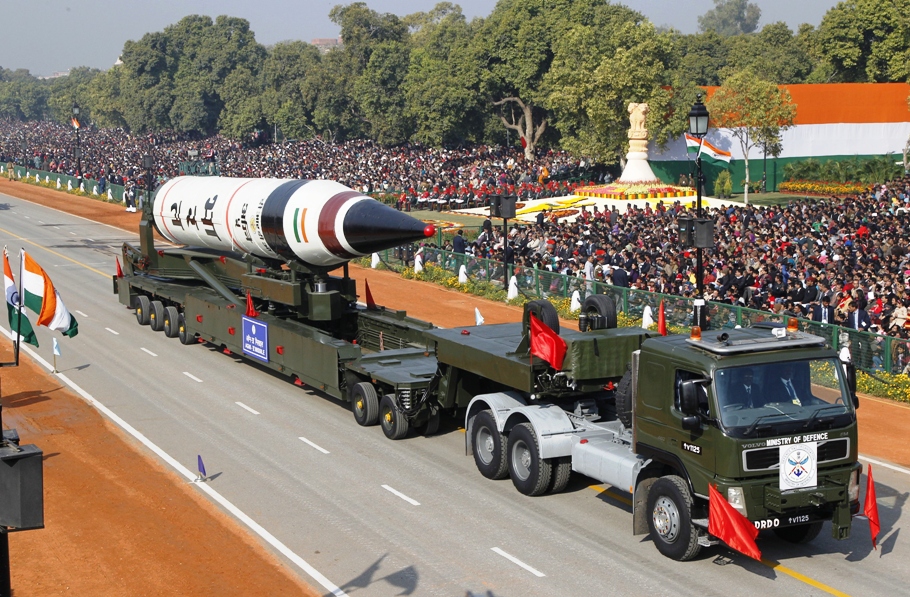
Missile Technology and Defense Systems
As we delve into the realm of missile technology and defense systems, the india vs pakistan military comparison takes on a new dimension. The prowess of a nation’s missile capability is a crucial barometer of its strategic strength, and both India and Pakistan have been keen to advance their arsenals in this domain. Here’s a closer look at how the two compare:
Ballistic and Cruise Missiles of India and Pakistan:
India’s Arsenal:
- Ballistic Missiles:
- Agni series: Ranging from Agni-1 (700 km range) to Agni-5 (over 5,000 km range), these missiles are the backbone of India’s strategic deterrence.
- Prithvi series: Short-range ballistic missiles with a range of up to 350 km, suitable for striking regional targets.
- Surya: Reportedly under development, expected to be India’s first intercontinental ballistic missile (ICBM).
- Cruise Missiles:
- BrahMos: A supersonic cruise missile with a range of 290 km, known for its high speed and precision. Jointly developed with Russia, it’s a versatile system deployable from land, sea, and air.
- Nirbhay: A subsonic cruise missile with a range of approximately 1,000 km, capable of low-altitude, terrain-hugging flights to evade radar detection.
Pakistan’s Arsenal:
- Ballistic Missiles:
- Ghaznavi: Short-range ballistic missile with a range of up to 290 km.
- Shaheen series: Including Shaheen-1 (750 km range) and Shaheen-2 (1,500 km range), these are medium-range ballistic missiles.
- Nasr: A short-range ballistic missile with a range of 60 km, designed for tactical nuclear strikes.
- Cruise Missiles:
- Babur: Ground-launched cruise missile with a range of up to 700 km, capable of carrying conventional or nuclear warheads.
- Ra’ad: Air-launched cruise missile with a range of 350 km, designed to deliver tactical nuclear warheads with precision.
Delivery Systems and Strategic Reach:
Both india vs pakistan military powers maintain a triad of land, air, and sea-based delivery systems for their nuclear weapons, which is a testament to their commitment to maintaining a credible deterrent posture. India’s missile technology is perceived to be more advanced, with a longer range and more diverse systems. This includes the land-based Agni-5, with a range capable of reaching across China, and the sea-based K-4 missiles for its nuclear submarines. In contrast, pakistan military power has been focusing on developing short-range tactical nuclear weapons, such as the Nasr missile, to offset India’s conventional superiority.
Technological Advancements and Future Trajectories:
India’s technological edge is evident in its ongoing projects, including the development of the BrahMos-II, a hypersonic version of the BrahMos missile, and the K-5, an under-development submarine-launched ballistic missile (SLBM) with an expected range of 5,000 km. Pakistan, on the other hand, is concentrating on improving its missile accuracy and developing multiple independently targetable reentry vehicles (MIRVs) for its Shaheen series.
In this strategic chess game of india vs pakistan military power, both nations are continuously evolving their missile capabilities. While India’s diverse and long-range missile systems reflect its broader strategic ambitions, Pakistan’s focus on tactical weapons underscores its intent to maintain a strong deterrent at a regional level. The ongoing development and potential deployment of these advanced missile systems by both countries continue to shape the security dynamics of South Asia, reinforcing the critical nature of the india vs pakistan comparison in military terms. As we compare indian army with pakistan army, their missile strengths are a clear indicator of their military strategies and the balance of power in the region.

Cyber Warfare Capabilities
In the digital battleground of the 21st century, cyber warfare capabilities are as critical as ground, air, and naval forces in the india vs pakistan military power equation. As we scrutinize the cyber front, the contrast between India and Pakistan’s capabilities is pronounced.
India’s Cyber Warfare Strengths:
- Institutional Framework:
- India has established robust institutions like the National Cyber Security Coordinator (NCSC), the Indian Computer Emergency Response Team (CERT-In), and the National Critical Information Infrastructure Protection Centre (NCIIPC). These bodies orchestrate national cyber defense strategies and incident responses, reflecting a well-structured approach to cyber threats.
- Private Sector Involvement:
- Giants like Infosys, Wipro, and Tata Consultancy Services not only contribute to the national cybersecurity landscape through advanced research and development but also offer consulting services globally, showcasing India’s commitment to cyber excellence.
- Human Capital:
- With a vast talent pool exceeding 100,000 cybersecurity professionals, India is well-equipped to tackle and preempt cyber challenges, both defensively and offensively.
- Offensive Capabilities:
- Steady investments in creating offensive cyber tools and methods have led to a marked enhancement in India’s cyber warfare capabilities, with reported cyber espionage operations targeting regional adversaries, specifically Pakistan.
Pakistan’s Cyber Warfare Capabilities:
- Steady investments in creating offensive cyber tools and methods have led to a marked enhancement in India’s cyber warfare capabilities, with reported cyber espionage operations targeting regional adversaries, specifically Pakistan.
- Emerging Infrastructure:
- Pakistan’s cyber capabilities are nascent, with the National Centre for Cyber Security (NCCS) and the Computer Emergency Response Team (PK-CERT) representing recent strides towards fortifying their cyber domain.
- Private Sector Contribution:
- The engagement of Pakistan’s private sector in cybersecurity research and development lags behind, with fewer enterprises active in this field compared to India’s vibrant cybersecurity ecosystem.
- Expertise and Vulnerability:
- A smaller contingent of cybersecurity experts places Pakistan at a disadvantage, leaving its digital assets more exposed to cyber intrusions and espionage.
- Offensive Cyber Activities:
- Although Pakistan has been implicated in cyberattacks targeting India’s critical infrastructure and government networks, these efforts have been relatively ineffectual, reflecting the disparity in cyber capabilities between the two nations.
Cyber Capability Gap and Implications:
- Although Pakistan has been implicated in cyberattacks targeting India’s critical infrastructure and government networks, these efforts have been relatively ineffectual, reflecting the disparity in cyber capabilities between the two nations.
- The widening cyber capability gap presents a significant challenge for Pakistan, as India’s cyber defenses grow increasingly sophisticated. This not only affects Pakistan’s ability to protect its digital assets but also to mount an effective cyber offensive against India.
- Additionally, the frail cybersecurity framework in Pakistan has economic implications, threatening the digital economy’s contribution to national growth and development.
In the india vs pakistan comparison, it’s evident that who is more powerful india or pakistan in the cyber domain leans towards India, given its advanced infrastructure, substantial private sector engagement, and a large pool of skilled professionals. The pakistan military power, in the context of cyber warfare, must accelerate its development to bridge the gap. As we compare indian army with pakistan army, the cyber warfare capabilities are a testament to how modern military conflicts will unfold, with code and digital espionage being as pivotal as traditional warfare.

Military Budget and Expenditure
As we delve deeper into the india vs pakistan military analysis, the financial sinews that strengthen a nation’s defense capabilities come into sharp focus. The budgets allocated by India and Pakistan for their military expenditures are not just numbers on a balance sheet; they are reflections of their strategic priorities and the weight they accord to national security within their national narratives.
India’s Defense Budget Dynamics:
- For the fiscal year 2023-2024, India has earmarked a formidable ₹ 5.93 trillion, showcasing a steadfast commitment to fortifying its military might.
- The subsequent year’s projection sees a further increase, with the defense budget climbing to ₹ 6.21 trillion, a 4.72% rise from the previous year, signaling a sustained investment in defense readiness.
- A notable 9.39% hike in the capital outlay for modernization highlights India’s intent to overhaul its armed forces. This includes a diverse array of procurements:
- Air Power: Acquisition of state-of-the-art fighter jets to maintain air superiority.
- Naval Strength: Addition of advanced warships to extend maritime reach.
- Land Forces: Upgrades with new tanks, artillery guns, and missile systems.
- Technological Edge: Investment in unmanned capabilities and cyber warfare tools.
Pakistan’s Defense Budget Trajectory:
- In contrast, Pakistan’s defense budget for the same fiscal year stands at Rs 1.8 trillion, a substantial 15.5% increase from the previous year, reflective of its strategic imperatives.
- This allocation represents about 1.7% of the nation’s GDP, underscoring the significant burden defense spending imposes on the economy.
- The defense sector’s financial demands are second only to debt payments, indicating the high stakes Pakistan places on military readiness.
India vs Pakistan: A Comparative Snapshot - The comparison between India’s and Pakistan’s defense budgets and strategies for the years 2023-2024 highlights the differing approaches and priorities of the two nations in terms of military expenditure and modernization.
- India’s Defense Budget and Strategy (2023-2024):
- Budget: ₹5.93 trillion
- GDP Percentage: 1.8%
- Year-on-Year Budget Increase: 4.72%
- Modernization Focus: India is undertaking a comprehensive modernization program, with a significant emphasis on integrating deep technology within the defense sector. This initiative underscores India’s ambition to sustain a cutting-edge military capability, reflecting the country’s robust economic growth and its foresight in adapting to future warfare technologies.
- Pakistan’s Defense Budget and Strategy (2023-2024):
- Budget: Rs 1.8 trillion
- GDP Percentage: 1.7%
- Year-on-Year Budget Increase: 15.5%
- Modernization Focus: Although specifics of the modernization focus are not detailed, Pakistan’s substantial increase in its defense budget highlights its determination to enhance military competence. This is particularly notable given Pakistan’s smaller economy compared to India, indicating a strategic commitment to maintaining military readiness and capability.
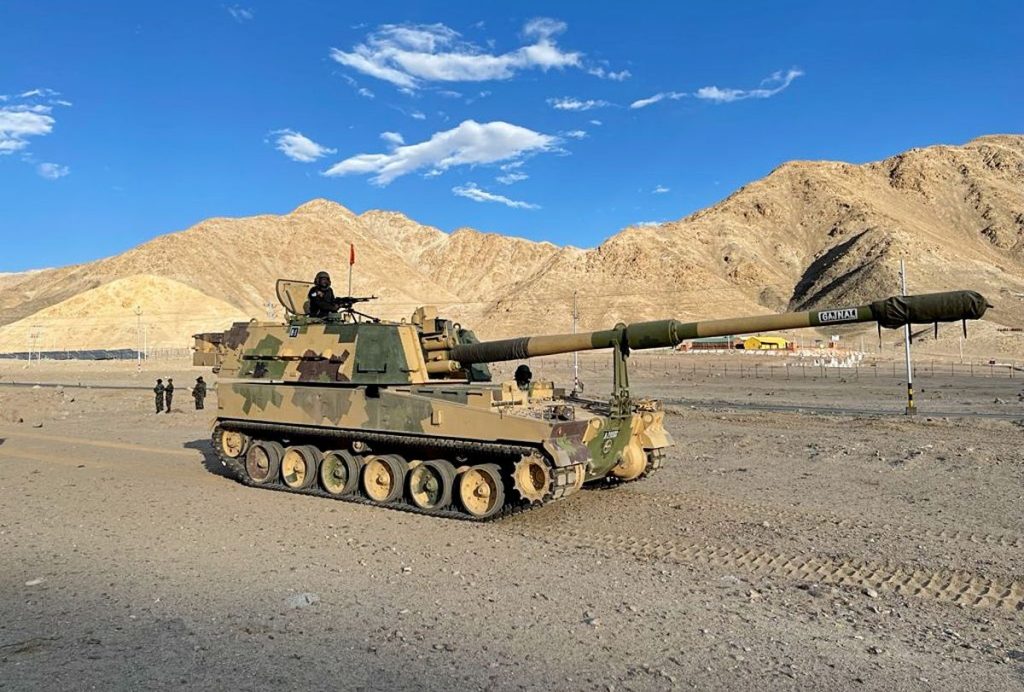
International Military Cooperation
In the intricate landscape of international military cooperation, both India and Pakistan have charted distinct paths that underscore their strategic priorities and geopolitical aspirations. For India, the embrace of global partnerships has been a cornerstone of its defense strategy, amplifying its military capabilities and diplomatic reach. Conversely, Pakistan’s recent hiatus from military drills hints at a strategic recalibration amidst economic and logistical challenges. Here’s a closer examination:
India’s Expanding Defense Ties:
- Key Partnerships: India’s defense landscape is significantly shaped by its collaborations with the USA, Russia, France, and Israel. These partnerships are not just transactional but are characterized by joint ventures, co-development of technology, and military exercises that enhance interoperability.
- USA and India: Joint exercises and defense technology transfers.
- Russia: A longstanding ally, contributing to India’s defense sector through equipment supply and energy collaborations, epitomized by the Kudankulam nuclear power plant.
- France and Israel: Suppliers of advanced military technology and participants in joint military exercises.
- Multilateral Engagements: India’s participation in military exercises spans a global canvas, including engagements with the UK, Japan, Germany, Italy, Egypt, Australia, and even China. These exercises not only bolster military readiness but also reinforce India’s position as a pivotal defense partner in the international arena.
Pakistan’s Strategic Pause and Potential Shifts: - Operational Hiatus: The decision to cancel all military drills until the end of 2023 points to pressing logistical and economic constraints faced by Pakistan’s Armed Forces. This pause could be indicative of a broader strategic reassessment or a temporary measure in response to immediate challenges.
- Diplomatic Overtones: Despite the operational hiatus, Pakistan’s issuance of visas to Indian pilgrims and the release of Indian fishermen and civilians in 2023 signal a nuanced approach to diplomacy, possibly laying the groundwork for thawing relations. The adherence to protocols like the exchange of lists of nuclear installations underscores a commitment to maintaining certain norms of engagement.
The Sharif Factor and Indo-Pak Relations: - Leadership Influence: The potential return of Nawaz Sharif as Prime Minister in the 2024 general elections could herald a new chapter in India-Pakistan relations. Sharif’s advocacy for improved ties with neighbors, especially India, presents a glimmer of hope for mending the strained relationship.
- Implications for Military Cooperation: A shift in leadership in Pakistan, coupled with a conducive political climate, could pave the way for renewed dialogue and possibly, military cooperation. This would not only impact the bilateral ties but also influence the regional security dynamics.
This exploration into the realm of international military cooperation reveals the nuanced and dynamic interplay between India and Pakistan’s military strategies and their diplomatic undertones. While India continues to strengthen its global defense partnerships, Pakistan’s current operational pause and potential political shifts offer a complex but intriguing future for bilateral and regional military cooperation. As we delve deeper into the india vs pakistan military power comparison, it’s evident that the fabric of their military engagements is intricately woven with threads of diplomacy, strategic needs, and geopolitical ambitions.
Conclusion
Throughout this comprehensive examination of India and Pakistan’s military apparatus, we’ve traversed the landscapes of land, air, and sea dominance, delving into the nuanced aspects of nuclear capabilities, missile technology, cyber warfare prowess, and the economic underpinnings that support these monumental defense mechanisms. The contrast in military strength, technological advancements, and strategic positioning between India and Pakistan not only highlights the complexity of subcontinental security dynamics but also underscores the pivotal role that military power plays in shaping the geopolitical chessboard of South Asia.
This analysis reaffirms the critical importance of continuous dialogue, diplomatic engagement, and perhaps most crucially, the pursuit of peace and stability in the region. As both nations forge ahead, enhancing their military capabilities and solidifying their defense postures, it remains paramount for India and Pakistan to navigate their rivalry with wisdom and foresight. The prospect of future cooperation, underpinned by mutual respect and understanding, could pave the way towards diminishing tensions and fostering a period of sustained peace that benefits not only South Asia but the global community at large.
FAQs
1. How many active personnel does the Indian Army have in 2024?
In 2024, the Indian Army boasts a substantial strength with 1,455,550 active personnel, securing the 2nd position globally in terms of active forces, just behind China, which leads with 2,035,000 active personnel.
What is Pakistan’s military ranking globally in 2024?
For the year 2024, Pakistan is recognized as a top 10 global military power, ranking 9th out of 145 countries in the Global Firepower (GFP) index.
Where does India stand in global military power rankings in 2024?
For the year 2024, India is recognized as a top 4 global military power, ranking 4th out of 145 countries in the Global Firepower (GFP) index.
Between India and Pakistan, which country has a more powerful military?
India holds the position of the 4th most powerful military in the world, trailing behind the United States, Russia, and China. Pakistan does not rank within the top 10 globally.
Which country has the strongest military in the world in 2024?
The United States is acknowledged as having the world’s most powerful military force in 2024, according to Global Firepower rankings.
Does Pakistan have a stronger army than India?
India surpasses Pakistan in terms of active military personnel, with 800,000 more active members. India has 1.4 million serving officers and soldiers, whereas Pakistan has 650,000 active personnel. When including reserve and paramilitary forces, India’s total military personnel exceeds 5 million.
How does Pakistan’s military power compare to India’s in terms of total power index?
In the total power index, India is ranked 4th just behind the United States, Russia, and China. Pakistan, on the other hand, has made significant strides, reaching the 9th position out of 145 countries and entering the top 10 for the first time.

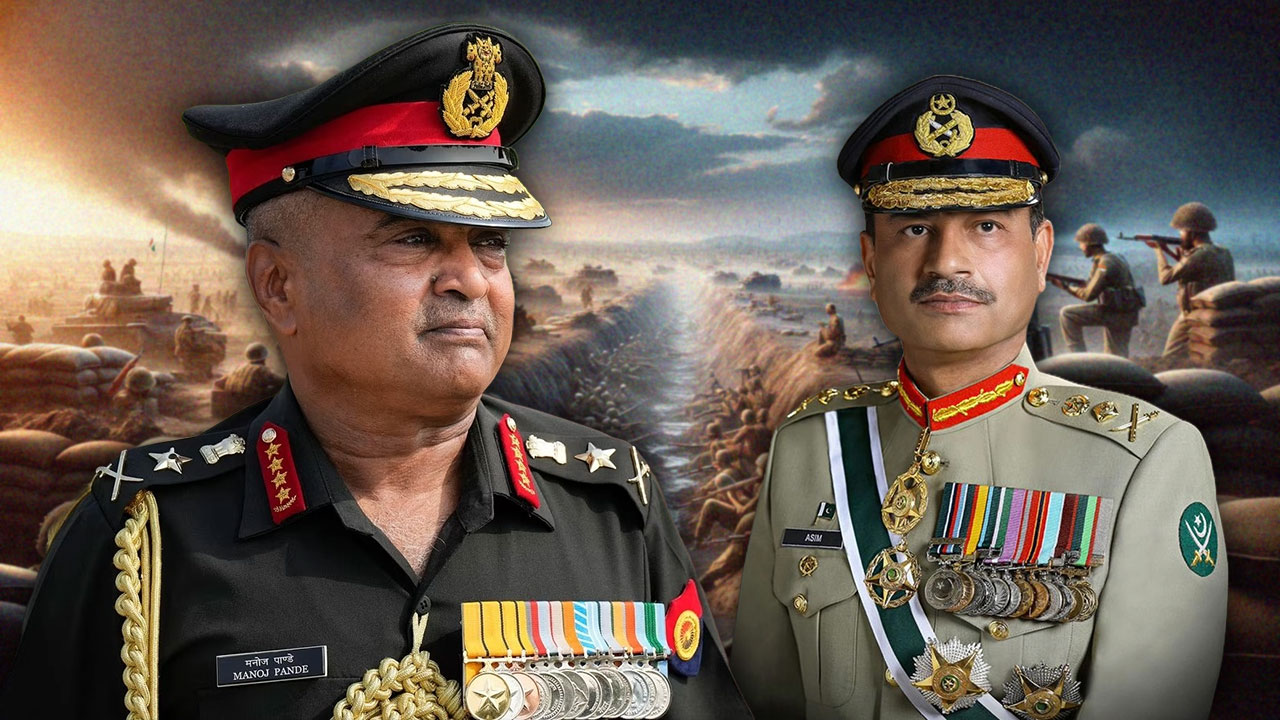



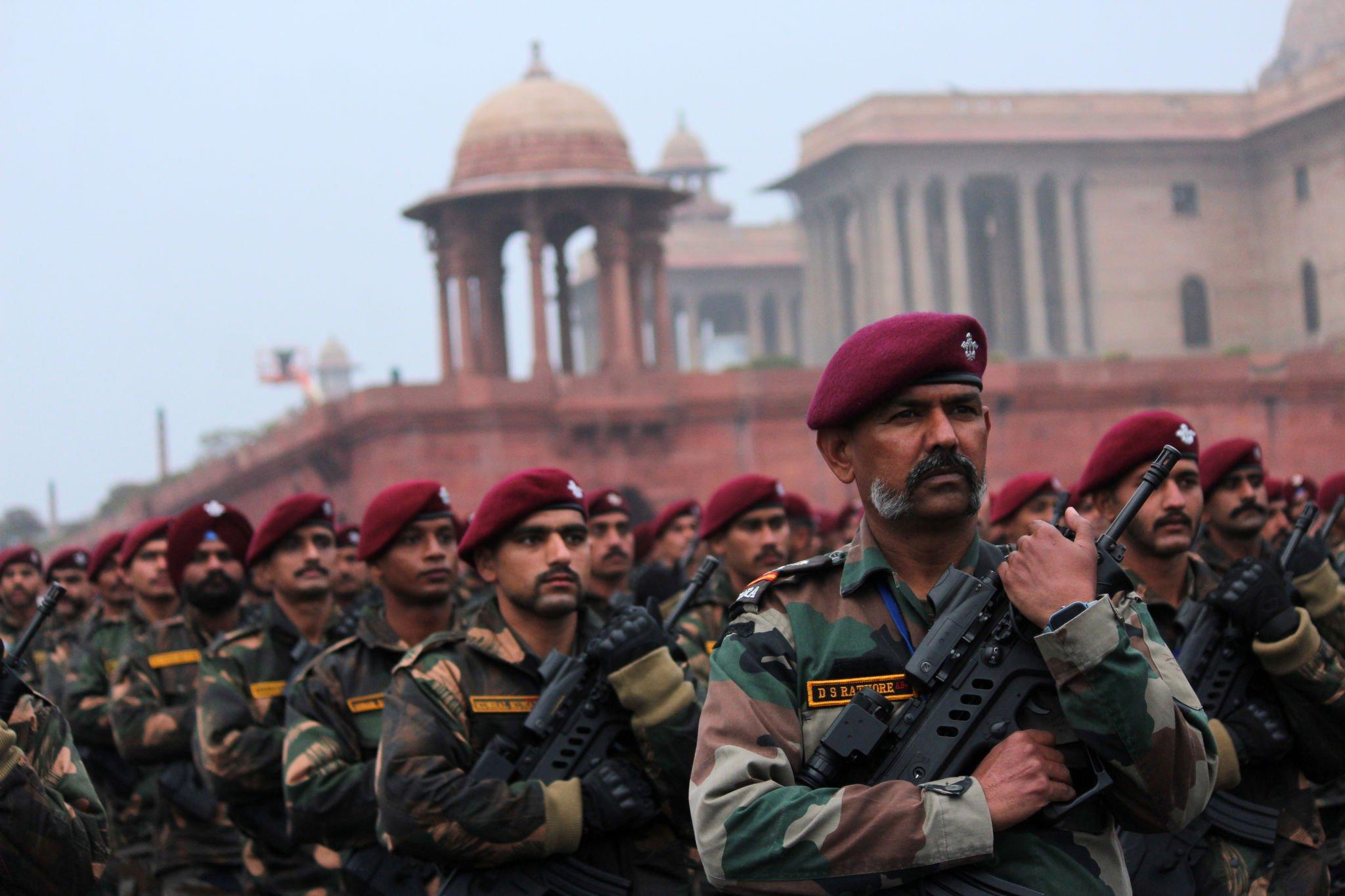






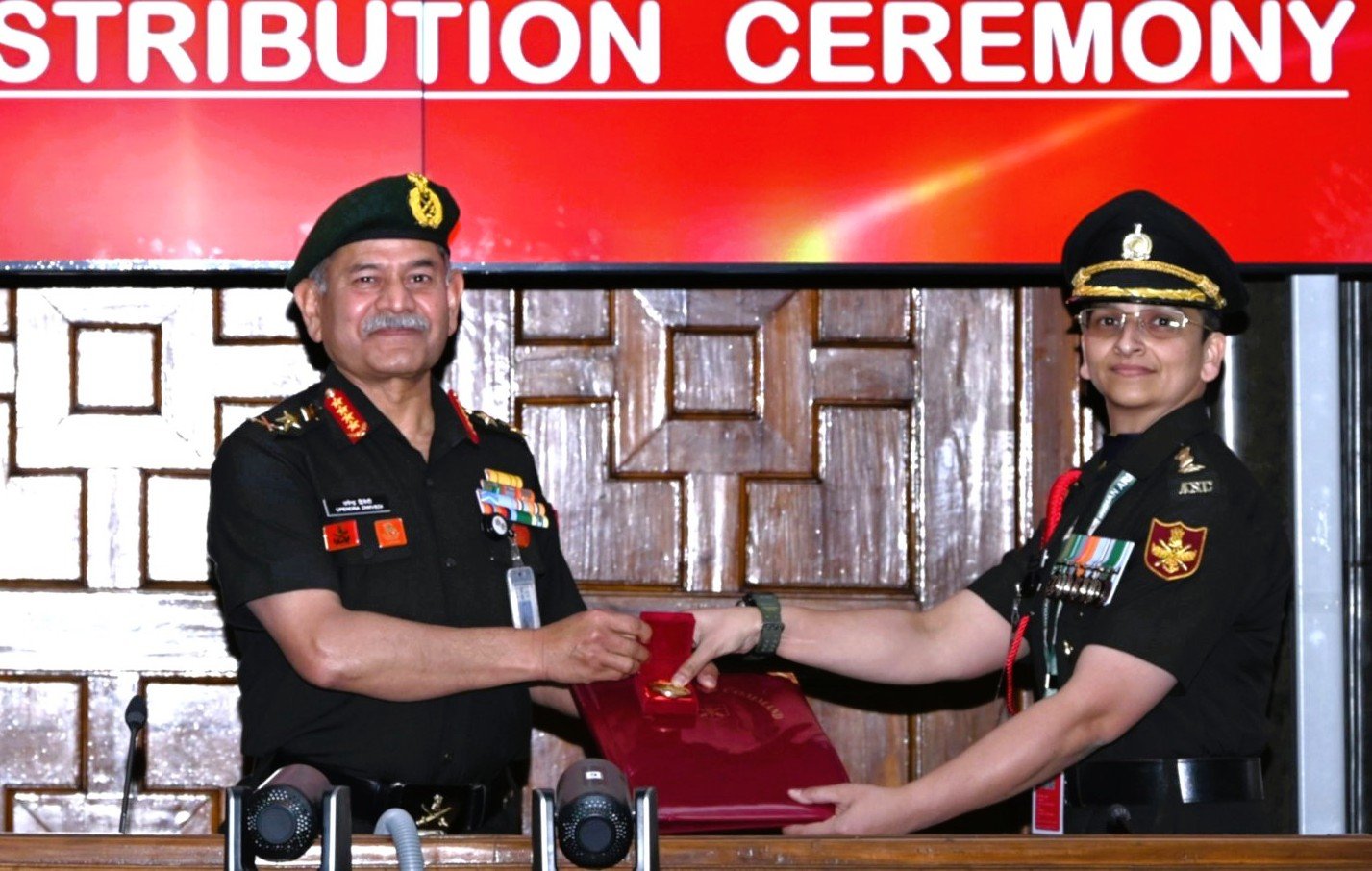

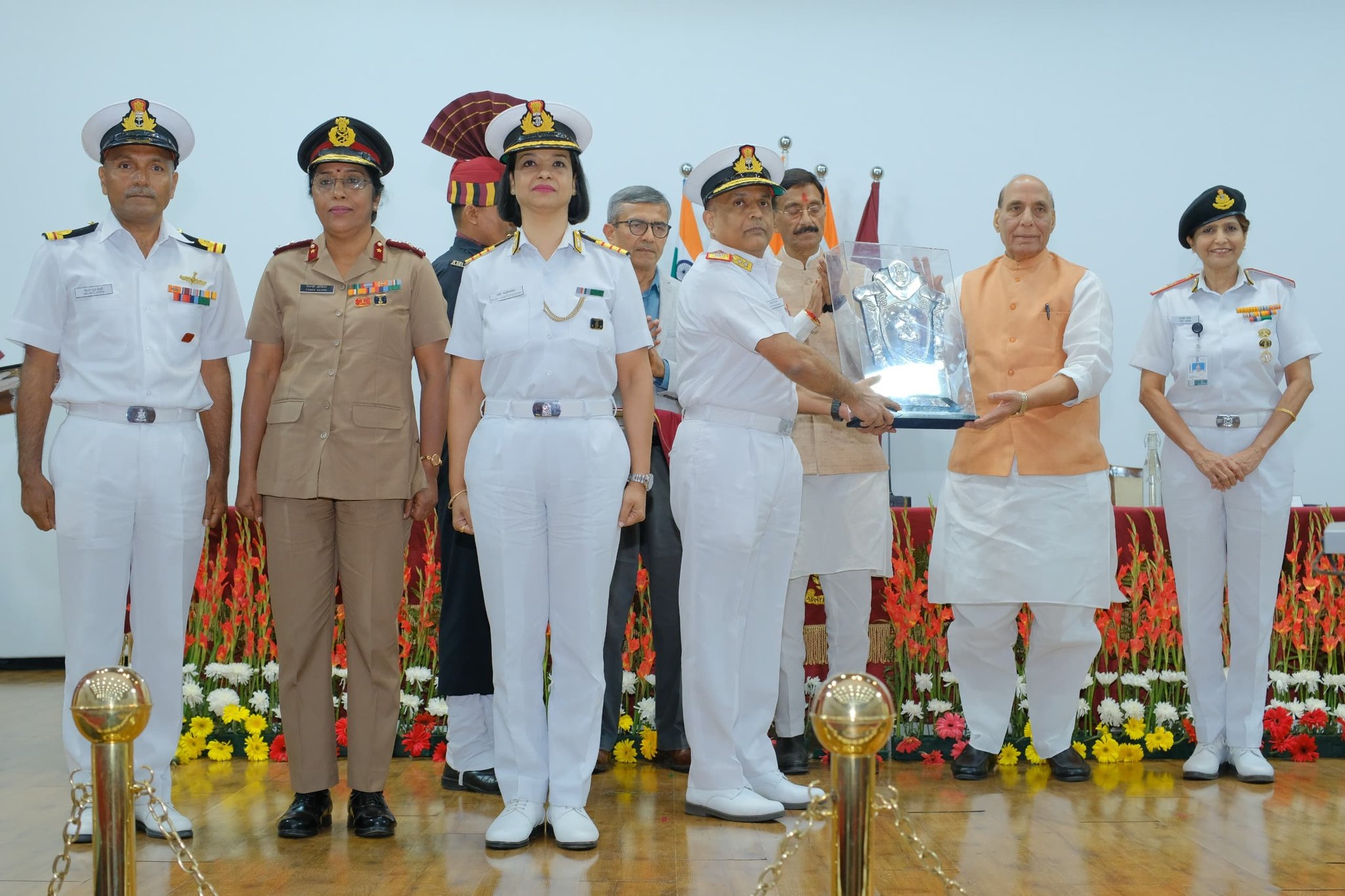


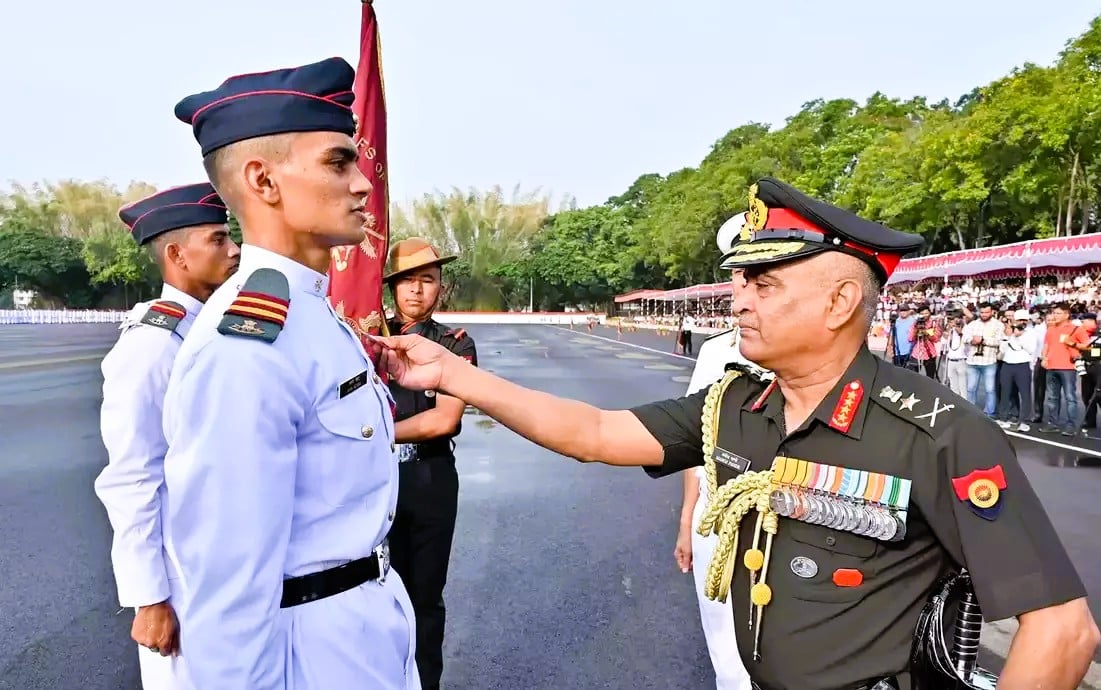

what a Mis Information 😂
Pakistan Rank 9th In World in Army Ranking
People often seek out stronger competitors to enhance their skills, yet it appears you are contrasting with a known weaker adversary merely to inflate a false sense of superiority, as seen in the India vs. Pakistan comparison. It would be more constructive to compare India with China to identify areas of improvement; without such comparisons, progress is unlikely
Sure, next will be on India vs China.